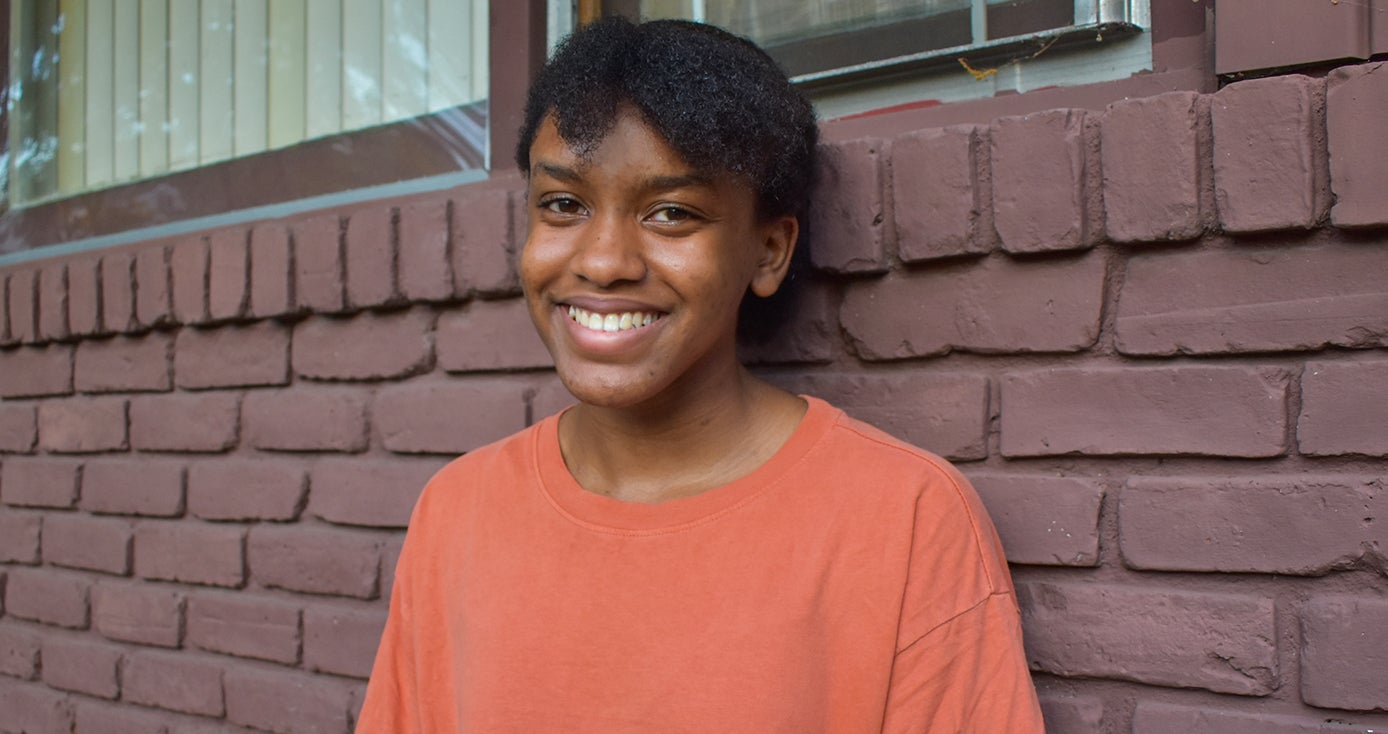
Subscribe to Pittwire Today
Get the most interesting and important stories from the University of Pittsburgh.Student Researcher Documents History of U.S. Quarantines
While Pennsylvania was in the midst of shelter-in-place orders to flatten the curve on COVID-19, Gina Watkins was digging into the ways the United States operated under quarantine in the past.
Her research revealed that, historically, the reasoning behind quarantine orders often relied less upon science than it did upon racist and xenophobic notions about the types of people who spread disease.
If the nation hopes to successfully limit the spread of COVID-19 until a vaccine is created, Watkins said it must take lessons from the past into account.
“We shouldn’t be anti-people. We should be pro-science and with this science, we should actually help people,” she said.
Watkins, a 20-year old originally from Plainfield, New Jersey, began investigating the topic as a Summer Undergraduate Research Awards (SURA) Project with the Kenneth P. Dietrich School of Arts and Sciences. SURA awards a $4,000 stipend to undergraduates to explore a range of independent research topics. Students also take part in a 12-week summer course designed to teach them to share their findings with broad audiences.
Watkins handed in her final paper for the SURA project but has decided to make studying the history of quarantines a long-term project. She is working with the Office of Undergraduate Research, Scholarship and Creative Activity to develop the concept further.
The fourth-year, who is pursuing a dual degree from the Department of History and the Department of History and Philosophy of Science, had a longtime interest in the history of public health that was piqued the end of last December, when China told the World Health Organization it was grappling with an unknown virus. She was guided by faculty mentor Mari Webel, an assistant professor in the Department of History, throughout the process.
By the end of January, as Watkins was deciding if she could manage a SURA project and a potential Study Abroad program, the virus had been identified as a member of the coronavirus family, begun its spread outside of China and been declared a global emergency by WHO. By the summer, Watkins began her SURA research under shelter-in-place orders in the United States.
Watkins used two texts, “Quarantine! East European Jewish Immigrants and the New York Epidemics of 1892,” and “Contagious Divides: Epidemics and Race in San Francisco’s Chinatown (American Crossroads)” to anchor her research. From those and other sources, she learned that between the 1850s and 1950s, quarantine efforts were largely driven by public opinion rather than scientific consensus.
“Around the 1890s there were a lot of epidemics in New York City, a lot of Jewish Russian immigrants who came in from specific ships that sailed to specific ports around the world picked up various diseases, like cholera. So when they came to America, there was a huge anti-immigrant movement that pushed them away,” she explained.
“The public health department hired scientists to get advice on what to do and they didn’t listen, they only listened to what the public wanted. The public said, ‘We don’t want these immigrants here, send them away.’ So the New York Public Health Department sent Russian Jewish immigrants to a small island with little to no resources and told them to stay there.”
She said public health officials didn’t fare much better in San Francisco’s Chinatown and other large cities after disease outbreaks—those cities also imposed restrictions based upon nationality. She said part of the issue is major ports on the coast of America had high immigrant populations, and outbreaks sometimes occurred as ships moved between ports. But there was little effort to determine which individuals were actually sick.
She said the nation could learn uncomfortable but critical lessons from the past.
“I’m not saying I like looking at how other things factor into establishing a quarantine, but it’s important to look at this and prevent it from happening again,” she said.
In order to be eligible to apply for SURA, a student must be a Dietrich School undergraduate who is interested in joining a community of scholars, be interested in conducting self-directed research and must be able to secure a faculty mentor within the disciplinary area of the research topic. The application cycle will begin again in Spring 2021.


